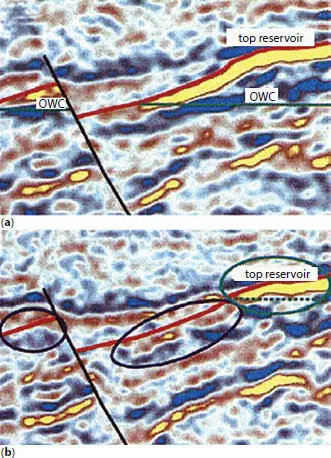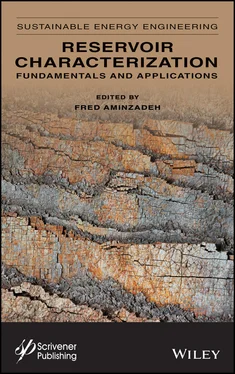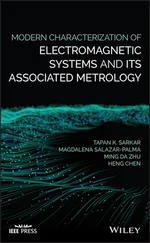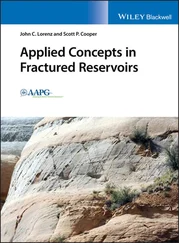1 ...7 8 9 11 12 13 ...25
1.4.2 Primary Production Stage
As the primary production of the reservoir begins, the goal is to position wells at optimal locations that would maximize hydrocarbon recovery. During secondary recovery and then enhanced recovery process, the engineer’s objective is to maximize the volume of hydrocarbon contacted by injected fluids. This is to achieve maximum volumetric sweep efficiency for fluid production. To minimize cost and risk, engineers attempt to predict reservoir performance—for both planning and evaluation of hydrocarbon recovery projects. Reservoir description in terms of reservoir architecture, flow paths, and fluid-flow parameters are the key to reservoir engineering. Accurate prediction of reservoir production performance is predicated primarily on how well the reservoir heterogeneities are understood and have been modeled and applied for fluid-flow simulation. This stage requires integration of reservoir characterization models with reservoir simulation, history matching for production optimization. Reservoir management process conducts reservoir related studies and applies the results from fluid flow modeling in defining, updating and optimizing a development plan for producing the reservoir and forecast the production profile. This phase also involves optimization and management of reservoir performance evaluation, surveillance of fluid flow and changes in the reservoir that result in changes in the original distribution of physical properties. The optimization criteria can change during the life cycle of a producing reservoir. Managing the reservoir depletion is a dynamic process and the reservoir engineers constantly react and adapt to the changes as they evolve. Dynamic characterization is a representation of the fluid flow in a static reservoir model and needs to be validated with reservoir performance data.
1.4.3 Secondary/Tertiary Production Stage
When the reservoir ages, intervention to increase production through reservoir stimulation and enhanced oil (or gas) recovery becomes necessary. Here, the main objective shifts to plan the production and injection, develop an optimum secondary/tertiary recovery mechanism and plan for infill drilling well locations to maximize recovery rate and deliver oil and gas at the planned rate and to extend the economic producing life of the reservoir as much as possible. The finite resources that are available are applied to plan and optimize the economic recovery of oil and gas from the reservoir. Petroleum engineers are responsible for planning and executing the development and of petroleum reserves. They seek to maximize petroleum recovery from the reservoirs. Effective use of reservoir characterization and reservoir model updating play an important role in this process. This is accomplished by incorporating physical property measurements of the reservoir rock and fluid properties that describes the reservoir architecture and its initial fluid distribution to make an optimum production and reservoir stimulation plan. 4D seismic and/or micro-seismic monitoring plays a role in assessing the effectiveness of well different well stimulation approaches (for example EOR, artificial lift or hydraulic fracturing), giving rise to the importance of “dynamic reservoir characterization” at this stage.
Engineers need to monitor the reservoir state of pressure, temperature and fluid distribution during the producing life of a reservoir. This information could 1) identify situations within the reservoir which may potentially impact oil and gas recovery, and 2) locate problems that can cause undesirable leakage or entry into wellbore. If these situations are not corrected in a timely manner, irreversible damage might occur to the reservoir affecting the ultimate oil and gas recovery. Inter-well monitoring of production and injection processes using geophysical techniques also allow improvement of field development plans and optimize reservoir management. Field scale monitoring of reservoir drainage patterns would improve the recovery factor.
1.5 Dynamic Reservoir Characterization (DRC)
Both in the primary and post-primary production phases, we need to have an updated characterization of the reservoir. We will refer to this as DRC. DRC can play a key role in production optimization and monitoring of effectiveness of the EOR operation or hydraulic fracturing. It can help surveillance of fluid flow which is an essential part of reservoir management process. Likewise, changes in the reservoir pressure distribution is also helpful to make important reservoir management decisions. Among many data sets that are used to monitor fluid, pressure and other reservoir properties is 4D seismic and Microearthquake data. For some examples, see Kosco [7], Maity [9] and Maleki [10].
Changes in the reservoir fluids or pressure distribution can be imaged by 4D. This is based on the impact of fluid saturation and reservoir pressure on the changes in compressional and shear wave velocities of seismic waves. A simplistic idea is to directly subtract two 3D seismic volumes of acquired in say successive years. This is often referred to as 4D seismic, with the fourth dimension being the time lapse between the two 3D seismic surveys. An example of time lapse seismic is in Figure 1.6. As the reservoir is produced, the distribution of the fluid properties changes with time but the reservoir rock frame properties remain constant during the producing life of the reservoir. Therefore, by repeating the seismic measurements i.e., acquiring time lapse seismic data and computing the differences in the seismic attributes between the measurements the changes in the distribution of reservoir fluid properties between wells could often be detected.

Figure 1.6 Time-lapse seismic response changes caused by different positions of oil-water contact (OWC) in Gullfaks field Tarbert reservoir. (a) Oil-water contact level before production and (b) after production for 10 years. Zones with changes in seismic impedance are circled. http://accessscience.com.
The changes in time lapse seismic data are due to the acoustic impedance variation (in this case, mostly the compressional velocity change), caused by the reservoir production or other changes (such as water or CO 2injection in the EOR process). Acoustic impedance is the product of velocity (V) and density (ρ), for time lapse seismic amplitudes are influenced by the incompressibility (K rock) of the reservoir rock and the production-generated changes in the incompressibility of the pore fluids (∆K fluids).
The reservoir rocks must therefore be sufficiently compressible so that there is a prominent and measurable contribution from the pore fluids. Soft compressible rocks like unconsolidated sands (younger in geologic times) are ideal for time lapse seismic while rigid or incompressible reservoir rocks such as carbonates do not lend themselves for effective application of this technology.
The acquisition and processing parameters for different vintage 3D seismic should either be the same or necessary calibration should be applied to make them consistent. That is the seismic response should be identical when no changes in the geologic formation due to injection of production has taken place. Some of these difficulties may be mitigated by using permanent sensors in wells and recording time lapse data.
1.5.2 Microseismic Data for DRC
The permanent sensors also can record micro seismic or microearthquake (MEQ) data in passive mode without any seismic source. They detect the seismic events that are induced by hydrocarbon production due to change in the reservoir stress with pressure changes. Many examples of MEQ data applications in DRC and/or monitoring hydraulic fracturing or other well stimulation processes have been reported.
Читать дальше









